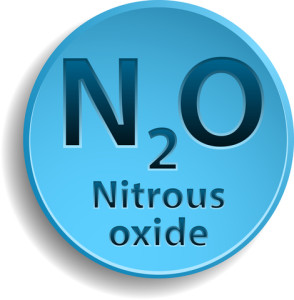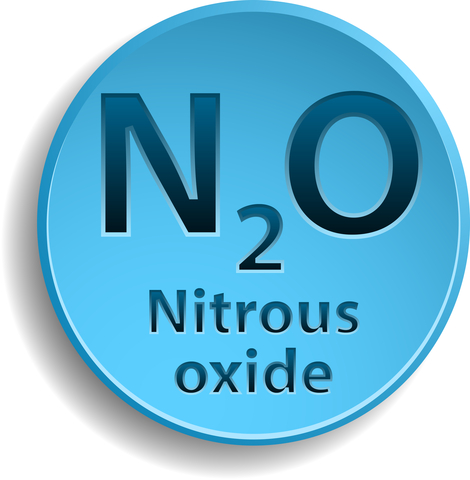
In his famous work, The Varieties of Religious Experience, William James discussed what he said was the ability of nitrous oxide (laughing gas) to produce “mystical consciousness” to an extraordinary degree. “Depth beyond depth of truth seems to be reveled to the inhaler.” But the revelation fades as the gas wears off. What is left seems like nonsense to the awakened mind. But the sense of “a profound meaning” persists. James said he knew more than one person who was persuaded that a genuine metaphysical revelation could come in a nitrous oxide trance. Now, laughing gas is being researched as a treat for depression.
James said he had personally tried nitrous oxide, and even wrote of his experience in print. He said one impression from these experiments stayed with him—that our waking consciousness was but one of several other potential form of consciousness. “No account of the universe in its totality can be final which leave these other forms of consciousness quite disregarded.” Looking back on his own experiences, he saw them converge towards a kind of insight that he felt had metaphysical significance.
His essay was “Subjective Effects of Nitrous Oxide,” and it appeared in the 1882 volume 7 issue of Mind. It can be found in a few places online. I’ve linked it on the website Erowid, which will also have other references we’ll examine. In his essay, James said that the keynote of nitrous-oxide intoxication was an intense sense of metaphysical illumination that occurred as the altered state of consciousness was wearing off.
The mind sees all logical relations of being with an apparant subtlety and instantaniety to which its normal consciousness offers no parallel; only as sobriety returns, the feeling of insight fades, and one is left staring vacantly at a few disjointed words and phrases, as one stares at a cadaverous-looking snow peak from which sunset glow has just fled, or at a black cinder left by an extinguished brand.
What James saw as the most coherent and articulate of his bursts of insight was this: “There are no differences but differences of degree between different degrees of difference and no difference.” James said there was an initial rapture of emotion in “beholding a process that was infinite” that turned to horror as the individual realized they were caught in an inevitable fate, “with whose magnitude every finite effort is incommensurable and in the light of which whatever happens is indifferent.”
As James himself said in the essay, just as every person’s encounter will vary, the individual’s personal experience with nitrous oxide will vary from time to time. However, he still thought that there still was a common thread running through all those who were intoxicated with nitrous oxide, namely an “intense metaphysical experience.”
A group of researchers, Nagel et al., reported on a pilot study done to assess the potential of nitrous oxide as a rapidly acting treatment for treatment resistant depression (TRD). The theory was based upon the influence of nitrous oxide on the NMDA receptor, which has been “implicated” in the neurobiology of depression. Other NMDA receptor antagonists, such as ketamine, have been shown “to provide a rapid and sustained antidepressant effect” when used at low doses. Given the similar mechanisms of action, the researchers hypothesized that nitrous oxide may also have rapid antidepressant effects on treatment resistant depression. So they designed a study to assess the immediate (2 hours) and sustained (24 hours) antidepressant effects of nitrous oxide in TRD patients.
Patients received either an admixture of up to a maximum of 50% nitrous oxide and 50% oxygen (as the active ingredient) or 50% nitrogen/50% oxygen (as the placebo) for one hour. Outcomes were assessed for each participant at baseline, 2 hours after treatment and 24 hours after treatment. The results indicated a significant improvement in depressive symptoms at 2 and 24 hours. There was also a sustained improvement with some participants for 1 week. Yet there were several limitations noted by the researchers of this study.
The full 60-minute nitrous oxide treatment was only completed by 15 of the 20 patients. The placebo treatment was completed by 20 individuals. The side effects for the treatment group were noted to be mild or moderate (nausea, anxiety, vomiting) and immediately reversible. This suggested an acceptable risk/benefit ratio of nitrous oxide for TRD to the researchers.
Their discussion suggested several limitations of the study. The small sample size meant that the results should be interpreted with caution until the results were replicated in larger populations. They also noted that the euphoric effects of nitrous oxide are hard to mask, so the blinding attempted in the study may not have been adequate. Despite knowing this, the researchers did not try to assess whether or not the participants were aware of their group assignment, “and this limits our conclusions.”
They also pointed out that there could have been a masking effect of depressive symptoms, meaning that: “the depressive symptoms were not really altered, but rather ‘covered up’ by other effects.” They noted where symptom masking has been evident with rapidly acting psychostimulants like cocaine and methylphenidate, “which promote a transient alteration in mood but not a true antidepressant effect.” Their preliminary study concluded there was evidence that nitrous oxide may have rapid and marked antidepressant effects in patients with TRD. They called for further studies that would attempt to determine optimal antidepressant dosing strategies and the risk/benefit of nitrous oxide in a larger and more diverse population of individuals with TRD.
Psychiatrist Sandra Steingard expressed reservations with the promotion of nitrous oxide as a rapid acting treatment for depression. She commented that while she never personally tried nitrous oxide herself, she knew others who did and expected that her mood would undoubtedly have been elevated as theirs was. Her suggestion was the observed “treatment’ effects of nitrous oxide were actually drug effects that would occur with any individual who used it. She proceeded to voice several questions on the use of nitrous oxide, ketamine or stimulants to treat depression. She thought there was a huge potential for harm; possibly greater than the drugs psychiatrist currently prescribed for depression.
What are the long term side effects? How hard is it to stop them? How do we deal with the corrupting influence of the profit driven forces so powerful in medicine? Most of these drugs are still studied over weeks and then prescribed for years. With drugs like stimulants, ketamine and nitrous oxide, I have a particular worry because these drugs are known to cause psychosis. Colleagues of mine have told me that they do not see people who become psychotic on stimulants. If they don’t, they are not looking. I am not comfortable assuming when an 18 year old develops psychotic symptoms after several years of treatment with an antidepressant that these two things are not related or that the psychosis was inevitable because the person had a diathesis to Bipolar Disorder. Stimulants are used to create animal models of psychosis because we have known for decades that stimulants can cause a person to become psychotic.
Erowid is the website for an organization that seeks to “provide accurate, specific, and responsible information about how psychoactives are used in the United States and around the world.” So you will find pro and con information on the use and effects of psychoactive substances there. Here are a few of the catalogued articles on problems from nitrous oxide use and abuse: “Asphyxia deaths from the recreational use of nitrous oxide;” “Suicide by nitrous oxide poisoning;” B 12-related medical problems from nitrous oxide: “Nitrous oxide myleopathy in an abuser of whipped cream bulbs [whippets] (nitrous oxide is used in whipped cream cans), “Myleneuropathy after prolonged exposure to nitrous oxide,” and this case report from outside of Erowid of a woman who developed myleopathy.
Below is a quote from a 1991 article on “Health hazards and nitrous oxide” in medical settings. Here is a link to a case report of an individual who suffered paranoid delusions after abusing whippets.
Although N2O was for many years believed to have no toxicity other than that associated with its anesthetic action, bone marrow depression in patients administered N2O for extended periods of time and neurological abnormalities in health care workers who inhaled N2O recreationally have disproved this notion.
Simply put, regardless of the short-term reversals of a depressed mood state, it does not seem that there will be any long-term benefits from the therapeutic use of nitrous oxide (N2O). And there seems to be plenty of concerns with its use. Treating depression with laughing gas is no laughing matter.





